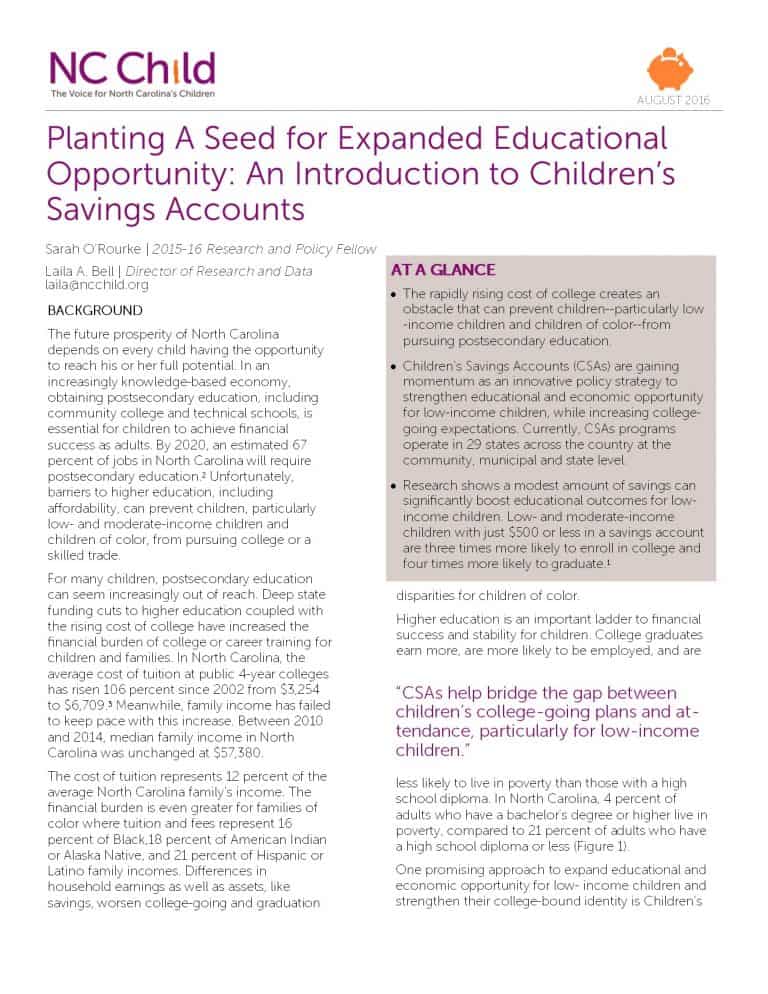The future prosperity of North Carolina depends on every child having the opportunity to reach his or her full potential. In an increasingly knowledge-based economy, obtaining postsecondary education, including community college and technical schools, is essential for children to achieve financial success as adults. By 2020, an estimated 67 percent of jobs in North Carolina will require postsecondary education.2 Unfortunately, barriers to higher education, including affordability, can prevent children, particularly low- and moderate-income children and children of color, from pursuing college or a skilled trade.
For many children, postsecondary education can seem increasingly out of reach. Deep state funding cuts to higher education coupled with the rising cost of college have increased the financial burden of college or career training for children and families. In North Carolina, the average cost of tuition at public 4-year colleges has risen 106 percent since 2002 from $3,254 to $6,709.3 Meanwhile, family income has failed to keep pace with this increase. Between 2010 and 2014, median family income in North Carolina was unchanged at $57,380.
The cost of tuition represents 12 percent of the average North Carolina family’s income. The financial burden is even greater for families of color where tuition and fees represent 16 percent of Black,18 percent of American Indian or Alaska Native, and 21 percent of Hispanic or Latino family incomes. Differences in household earnings as well as assets, like savings, worsen college-going and graduation disparities for children of color.
Higher education is an important ladder to financial success and stability for children. College graduates earn more, are more likely to be employed, and are less likely to live in poverty than those with a high school diploma. In North Carolina, 4 percent of adults who have a bachelor’s degree or higher live in poverty, compared to 21 percent of adults who have a high school diploma or less.
One promising approach to expand educational and economic opportunity for low- income children and strengthen their college-bound identity is Children’s Savings Accounts (CSAs).
Additional Resources:
To view the slide deck for our Research to Practice webinar about CSAs, click here.
To learn more about local CSAs currently operating in North Carolina, click here.
Download
